Top 7 Leadership Mistakes That Can Destroy Team Trust
Discover the top seven leadership mistakes that can erode team trust and learn how resource planning helps you avoid them for a stronger, more productive team.
Trust is the heart of a strong team. Without it, collaboration stalls, morale drops, and productivity suffers. Even well-meaning leaders can make mistakes that break trust, leading to disengaged employees and high turnover. In this blog, we’ll cover the top seven leadership mistakes that can damage team trust and share practical solutions to avoid them. We’ll also explore how resource planning can prevent these mistakes by giving your team the support they need to thrive. With clear communication, accountability, and smart resource management, you can build a workplace where trust flourishes.
What Is Resource Planning And How Does It Help Avoid Leadership Mistakes?
Resource planning is the process of assigning resources, such as time, budget, and people, to projects to meet goals efficiently. It’s a key leadership tool that prevents common mistakes like overloading employees or setting unclear expectations. By ensuring your team has the right tools, time, and support, resource planning reduces stress, aligns efforts, and shows employees their work is valued.
For example, resource planning prevents unclear communication by setting clear timelines, avoids micromanagement by providing the right tools for independent work, and supports accountability by anticipating resource needs to prevent errors.
Want to dive deeper? Check out our full guide on What is Resource Planning.
Top 7 Leadership Mistakes and How to Fix Them
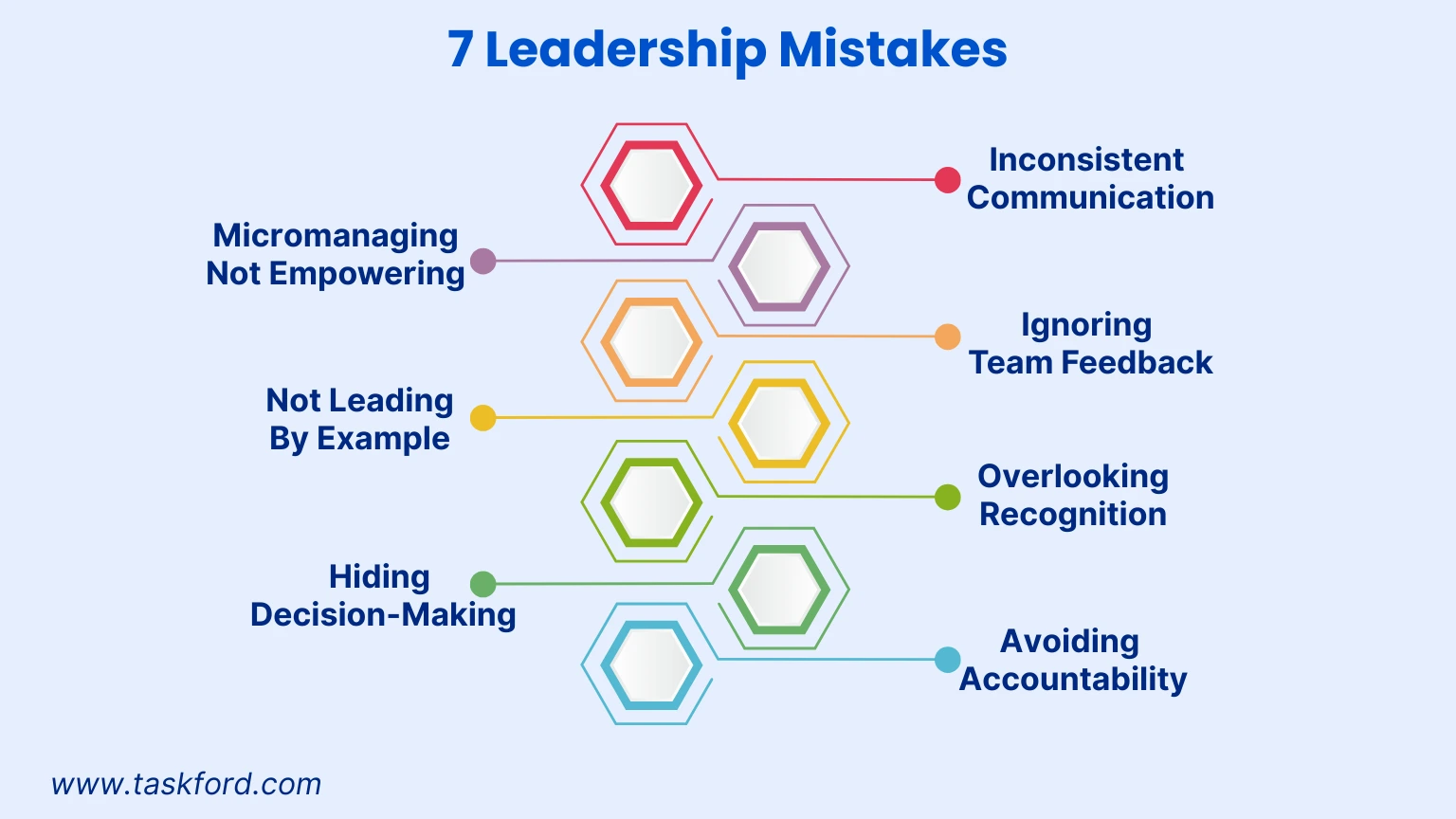
Mistake 1: Unclear or Inconsistent Communication
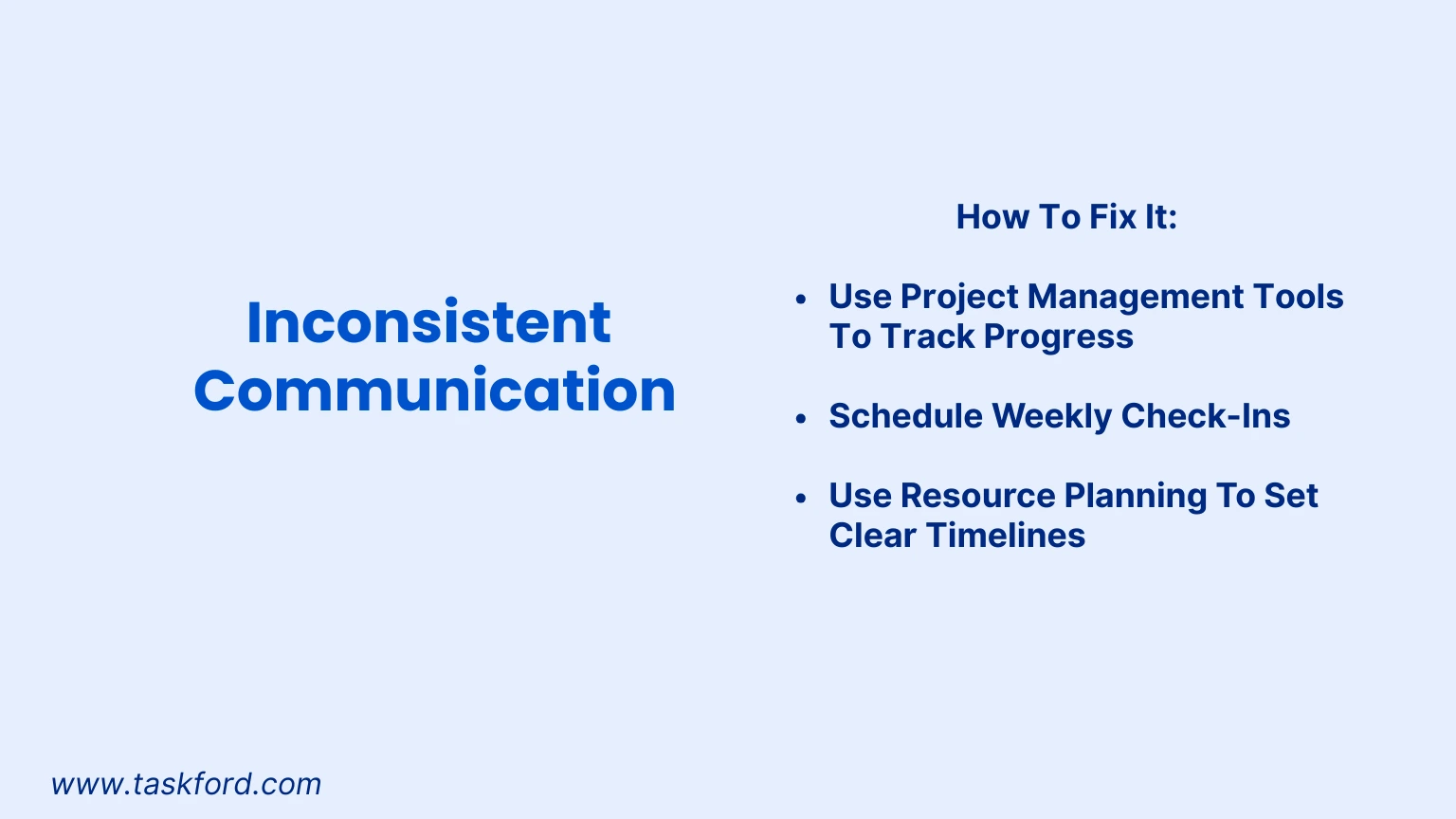
What’s the Issue?
Unclear or irregular communication confuses teams. If a leader doesn’t clarify expectations or project goals, employees waste time guessing priorities, causing frustration, missed deadlines, and reduced productivity. This lack of clarity can also lead to misallocated resources, as teams work on the wrong tasks.
Real-World Example: A marketing team misses a campaign launch because the manager didn’t specify the target audience or timeline, leading to chaos and wasted effort.
Fix It:
- Use project management tools like TaskFord, Asana and Wrike to assign tasks and track progress.
- Schedule weekly check-ins to answer questions and align goals.
- Use resource planning to set clear timelines, prioritize tasks, and allocate budget effectively.
Why It Works: Clear communication, supported by organized resource management, reduces confusion, saves time, and keeps everyone aligned on project objectives.
Mistake 2: Micromanaging Instead of Empowering
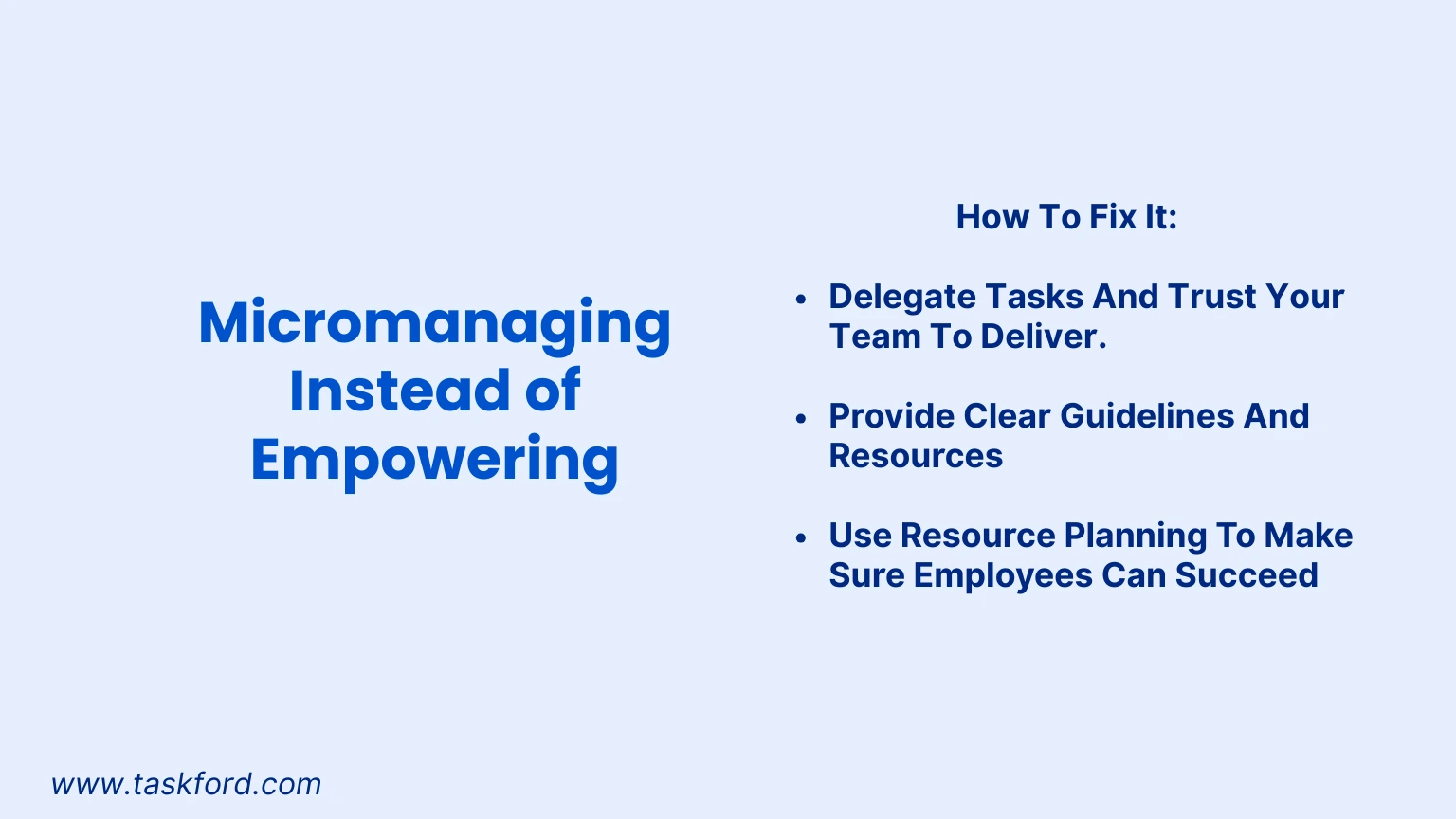
What’s the Issue?
Micromanaging shows a lack of confidence in your team. Constantly checking every detail kills motivation, slows progress, and makes employees feel their skills aren’t valued. It also wastes time that could be better spent on productive tasks.
Real-World Example: A designer stops sharing creative ideas because their boss tweaks every pixel, delaying the project and frustrating the team.
Fix It:
- Delegate tasks and trust your team to deliver.
- Provide clear guidelines and resources upfront to set them up for success.
- Use resource planning to ensure employees have the tools, time, and budget to work independently.
Why It Works: Empowering your team, with proper resource planning, boosts confidence, encourages ownership, and frees up time for strategic priorities.
Mistake 3: Ignoring Team Feedback
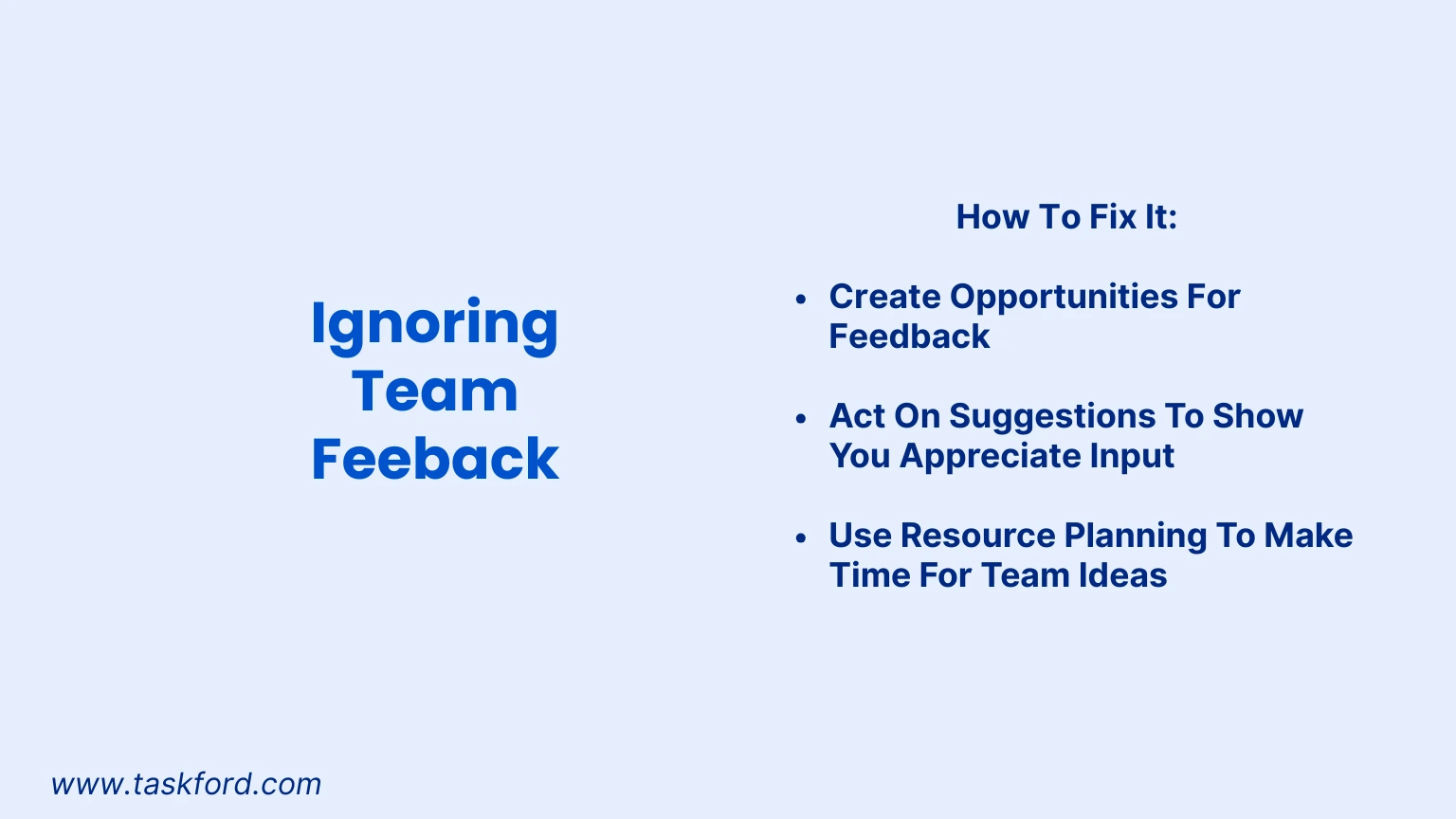
What’s the Issue?
Dismissing employee input makes people feel unheard, stifling innovation and engagement. If a team member suggests a better way to manage a project and gets ignored, they’ll stop offering ideas, which can lead to missed opportunities for efficiency.
Real-World Example: A sales team suggests a new CRM tool to improve client tracking, but the leader brushes it off. The team feels undervalued and stops contributing ideas.
Fix It:
- Create opportunities for feedback, like brainstorming sessions or anonymous surveys.
- Act on suggestions to show you value input and are open to improvement.
- Use resource planning to allocate time for reviewing and implementing team ideas.
Why It Works: Listening encourages collaboration, and resource planning helps turn feedback into actionable improvements, boosting efficiency.
Mistake 4: Not Leading by Example
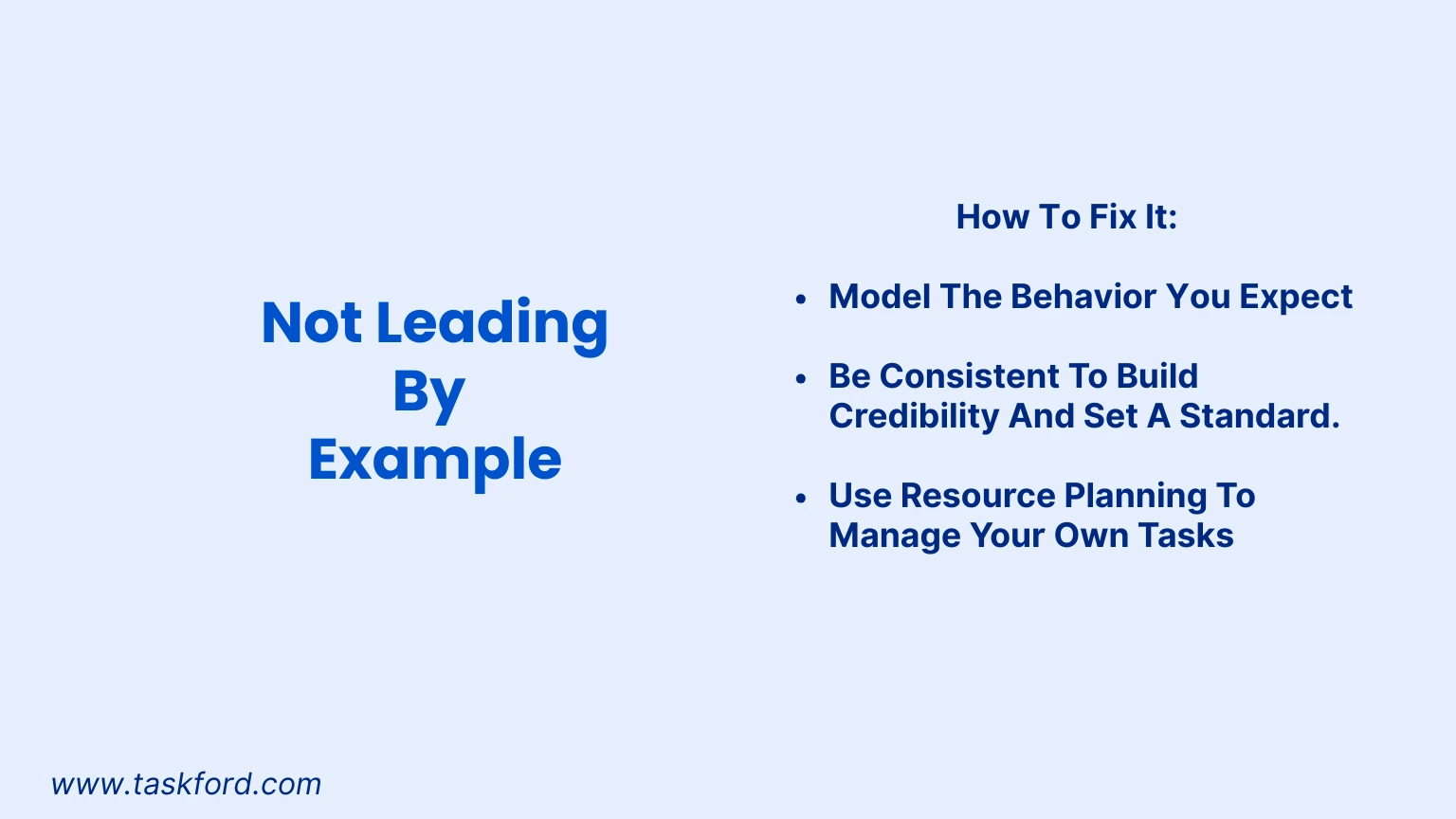
What’s the Issue?
Leaders who don’t practice what they preach lose credibility. If you stress punctuality but arrive late, or demand accountability while avoiding it, employees lose respect. This inconsistency can disrupt team focus and resource allocation.
Real-World Example: A manager pushes for tight deadlines but misses their own, making the team doubt their leadership and question project priorities.
Fix It:
- Model the behavior you expect, like meeting deadlines or using resources wisely.
- Be consistent in your actions to build credibility and set a standard.
- Use resource planning to manage your own tasks, showing how to prioritize effectively.
Why It Works: Leading by example, supported by resource planning, inspires your team to follow your lead and stay focused.
Mistake 5: Overlooking Recognition and Growth
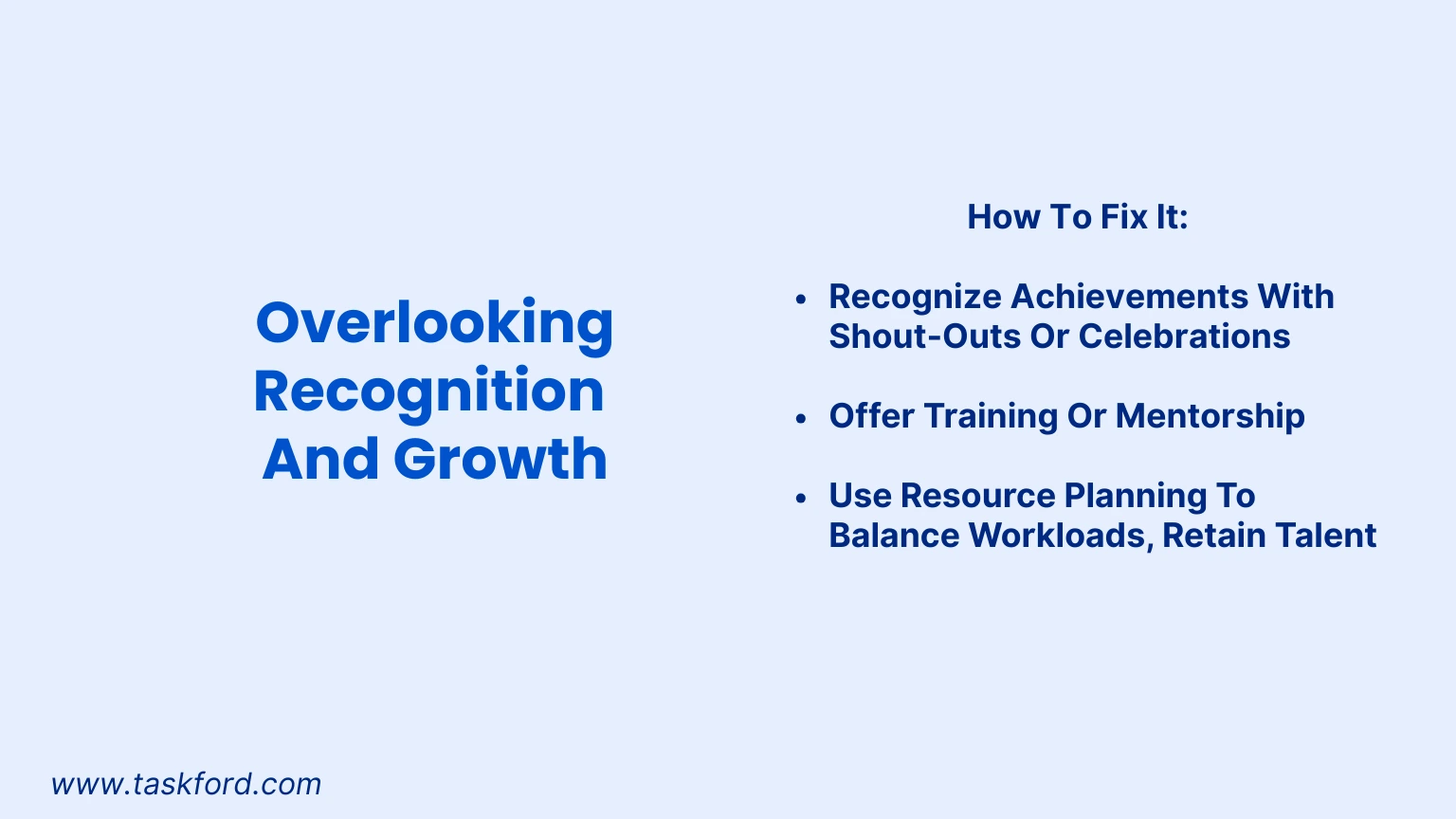
What’s the Issue?
Failing to celebrate wins or invest in development makes employees feel invisible. If someone completes a tough project but gets no acknowledgment, or if growth opportunities are missing, they’ll disengage, leading to turnover and disrupted projects.
Real-World Example: A developer delivers a flawless app update but hears nothing from their leader. They start job-hunting, leaving the team short-staffed.
Fix It:
- Recognize achievements with shout-outs, bonuses, or team celebrations.
- Offer training or mentorship to support career growth and skill development.
- Use resource planning to balance workloads and retain talent by preventing burnout.
Why It Works: Recognition and development show you value your team, and resource planning keeps employees engaged by ensuring manageable workloads.
Mistake 6: Hiding Decision-Making

What’s the Issue?
Making decisions without explanation breeds suspicion. If a leader shifts project priorities without sharing why, employees may assume favoritism or hidden motives, leading to confusion and misaligned efforts.
Real-World Example: A team’s budget is cut without explanation, leaving them questioning the leader’s intentions and struggling to complete tasks.
Fix It:
- Explain the reasoning behind decisions, especially those impacting the team.
- Share how resource planning supports project goals and resource allocation.
- Involve key team members in discussions when possible to build collaboration.
Why It Works: Transparency builds understanding, and resource planning ensures decisions are backed by clear resource allocation.
Mistake 7: Avoiding Accountability
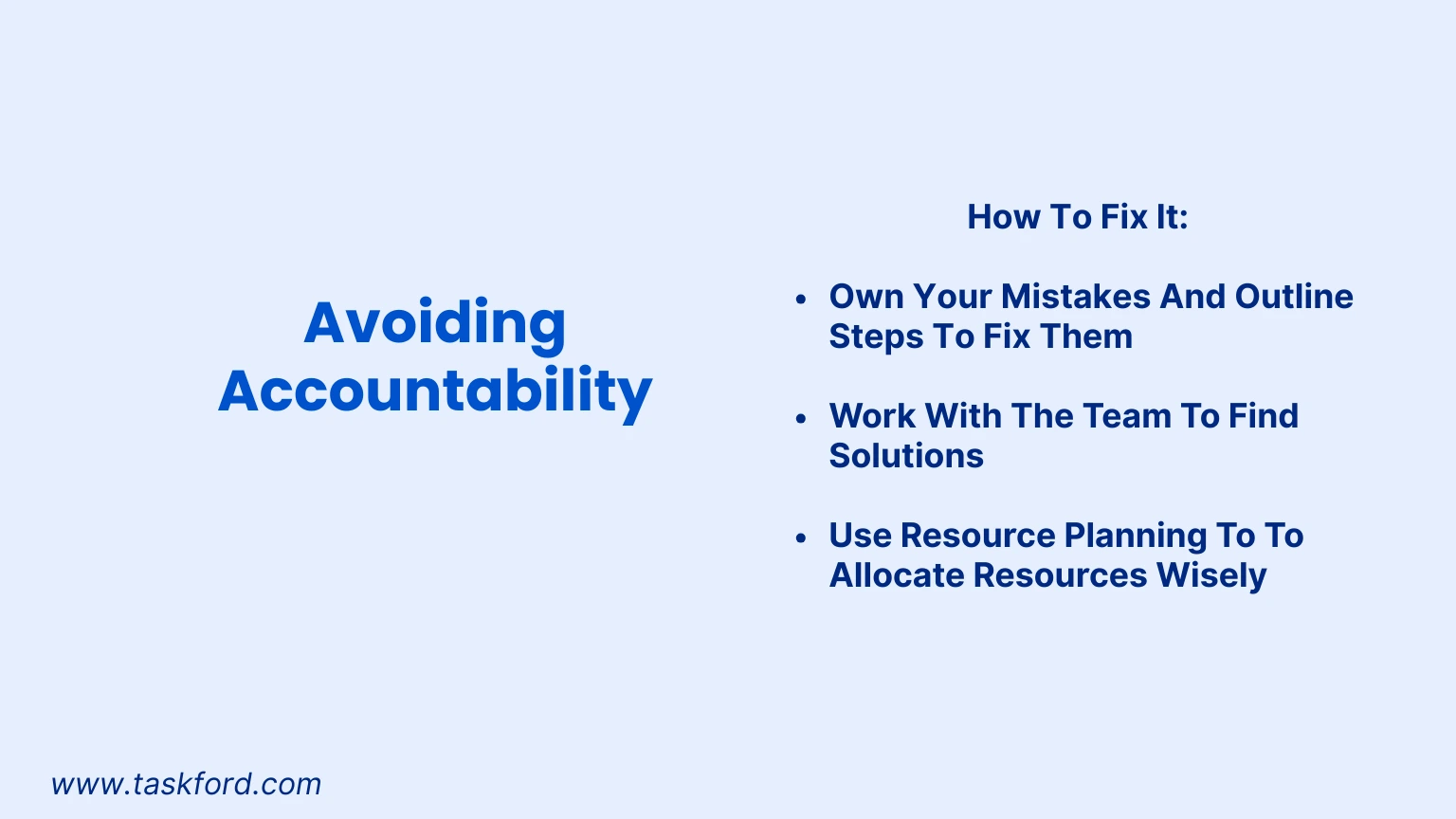
What’s the Issue?
Leaders who blame others for mistakes create a culture of fear. If a project fails due to poor planning and the leader points fingers, employees become defensive, avoid risks, and waste resources fixing errors.
Real-World Example: A missed deadline is blamed on the team, even though the leader didn’t allocate enough resources. The team stops taking initiative.
Fix It:
- Own your mistakes and outline steps to fix them, showing leadership.
- Work with the team to find solutions, fostering collaboration.
- Use resource planning to prevent errors by allocating resources wisely and anticipating needs.
Why It Works: Accountability, paired with resource planning, creates a safe space for learning and keeps projects on track.
Why Avoiding Leadership Mistakes Is Essential for Resource Planning
Avoiding these leadership mistakes directly improves resource planning, ensuring projects run smoothly and teams stay productive. Here’s why:
-
Prevents Wasted Resources: Unclear communication or micromanagement leads to duplicated efforts or delays, wasting time and budget. Clear communication and empowerment, supported by resource planning, ensure resources are used efficiently.
-
Aligns Team Efforts: Ignoring feedback or hiding decisions can misalign tasks with project goals. Listening to input and explaining decisions helps resource planning prioritize the right tasks and allocate resources effectively.
-
Reduces Burnout and Turnover: Overlooking recognition or growth opportunities causes disengagement, leading to high turnover, which disrupts resource planning. Recognizing contributions and balancing workloads keep teams motivated and stable.
(Learn more: How To Reduce Burnout On A Project)
-
Supports Accountability: Blaming others for mistakes creates inefficiencies, as resources are misallocated to fix errors. Owning mistakes and using resource planning to prevent them ensures projects stay on track.
By avoiding these mistakes, leaders can optimize resource planning, reduce waste, and create a more efficient and productive work environment.
Strategies to Build a Trusting Team
Avoiding mistakes is just the start. Here are three ways to actively build trust and create a thriving team:
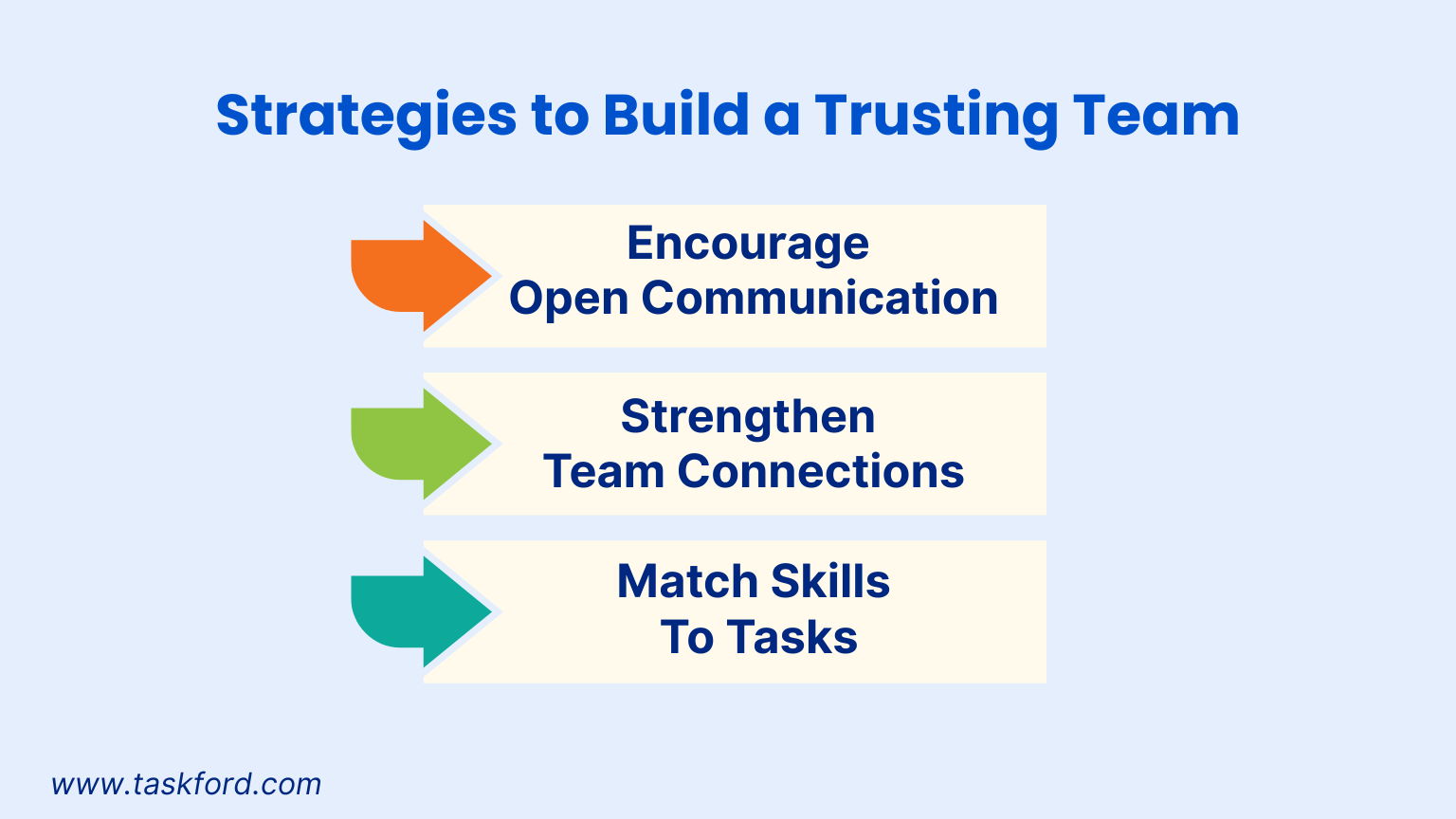
1. Encourage Open Communication
Host regular team meetings or one-on-ones where everyone can share ideas and concerns. Use tools like Slack for quick updates. Open communication, combined with resource planning, ensures tasks align with team needs, building trust through transparency.
2. Strengthen Team Connections
Trust grows when team members bond. Plan team-building activities, like problem-solving games or casual coffee chats. Strong relationships improve collaboration and make resource management easier by reducing conflicts.
3. Match Skills to Tasks
Use resource planning to assign tasks based on team strengths. For example, let analytical thinkers handle data tasks and creative minds lead design projects. When employees feel their skills are valued, trust and engagement grow.
How to Rebuild Trust After a Misstep
If you’ve made a mistake, you can recover. Start by owning it. Apologize sincerely and explain what happened. Listen to your team’s concerns through open discussions. Then, commit to consistent communication, recognition, and smart resource planning to rebuild trust. Steady actions show your team you’re serious about change.
Conclusion
Leadership mistakes can hurt team trust, but they’re fixable. By communicating clearly, empowering your team, and staying accountable, you can create a workplace where trust thrives. Resource planning plays a key role by ensuring your team has the tools and support to succeed.
Learn more
- Crafting a Resource Management Plan: A Project Manager's Handbook
- Lack Of Resources? 7 Smart Ways to Deliver Results Anyway
- Top 8 Resource Planning Software Solutions For Hybrid Teams in 2025
Making work simpler,
smarter, and more connected
Join our waitlist and be notified first.

Related Blog
Subscribe for Expert Tips
Unlock expert insights and stay ahead with TaskFord. Sign up now to receive valuable tips, strategies, and updates directly in your inbox.






